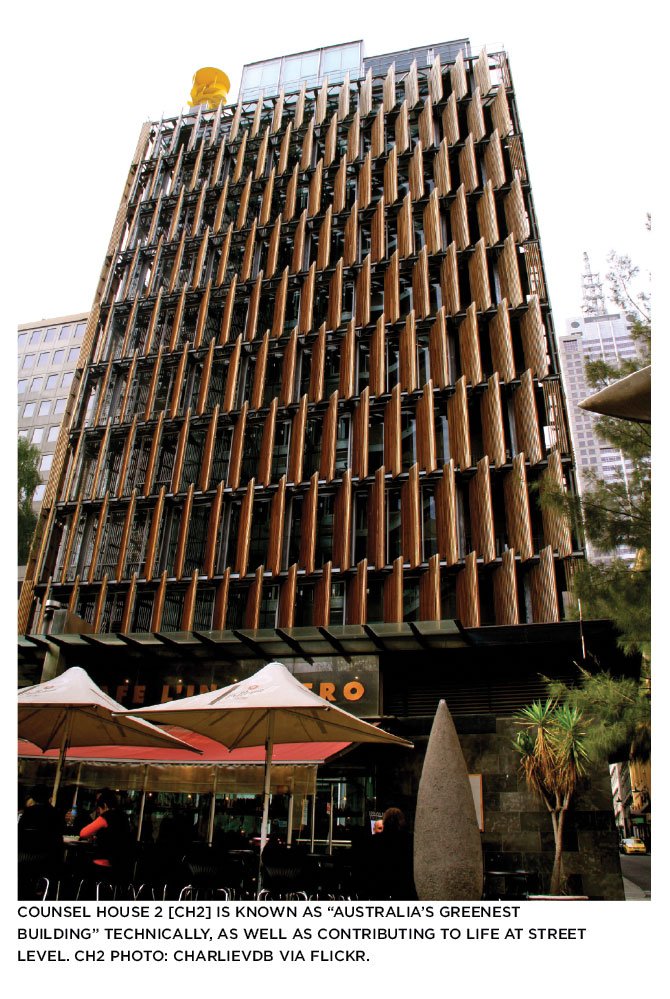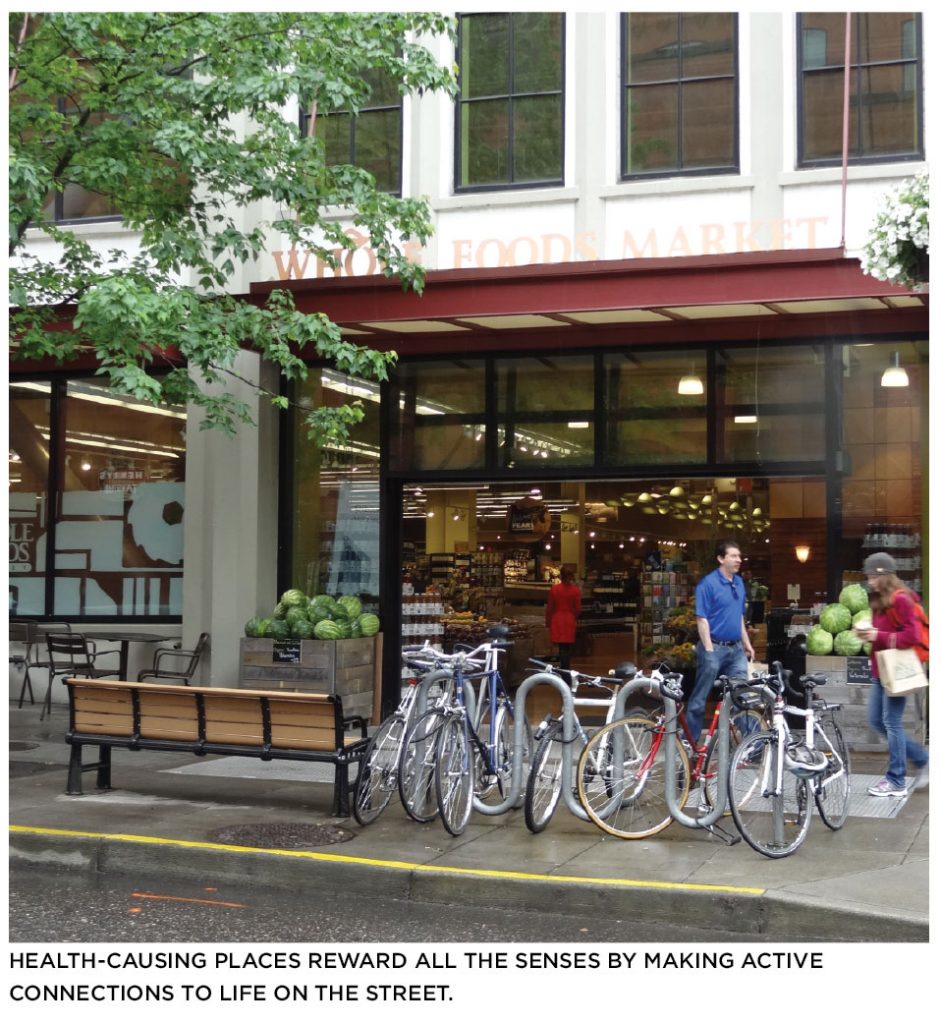 Does it Cause Health?
Does it Cause Health?
What if our health became the basis for judging every building and every public space? What if every person, everywhere always asked, “Does this place cause health? How does it make me feel?”
By Tye S. Farrow and Sharon Vanderkaay
Need for a higher purpose
There is no such thing as a neutral place. What we build either enhances or erodes our health. The full range of design factors that influence our total health extend beyond the state of our physical health, to include qualities that affect our state of mind.
Until recently, attention has been focused almost exclusively on the technical end of the sustainability spectrum. LEED for example, has been primarily effective in assessing eco-responsibility from this standpoint. By contrast, attention to environmental responsibility from a place-making and life-enhancing point of view has been nearly absent. A building might therefore attain LEED Platinum status, while being extremely unhealthy in terms of its social, cultural and psychological impact. The Living Building Challenge moves to expand the eco-evaluation scope to include health, equity and beauty as well as site, water, energy and materials. Equally, the New York City Department of Planning’s Active Design Guidelines focus primarily on physical health activity [such as walkability] but fall short of the larger basket of total health.
The time has come to take the next leap forward by assessing total health—encompassing social integration, brain stimulation and spiritual regeneration—as part of our evaluation criteria. In other words, responsible building today cannot be isolated, placeless and rootless. If what we build is not beloved, it is at risk of disposal.
Our quest now is to make the places we live, learn and work a thriving habitat. Yet the sustainability movement is frequently hampered by politics and disagreements regarding the best way forward. Given this reality, the intersection between individual and public health can be a unifying cause that serves to accelerate progress. In order to succeed, the cause and criteria must be easily understood and embraced through a common, critical eye by all of us.
Studies indicate that public awareness campaigns based on fear and negative global consequences attract initial attention, but they are ineffective as a means to change behaviour and results. Yet when we become aware of the physical, psychological and spiritual elements that affect our own day-to-day environment, our values and norms can shift. The higher purpose of “creating a world of places that make us feel better” is motivating and less overwhelming than the fearful concept of staving off climate change.
Tye Farrow is the founder of Farrow in Toronto. He has gained international recognition for the design of buildings and places that enhance health and raise expectations for design. Sharon Vanderkaay is a design strategy, research and communications specialist based in Toronto.





